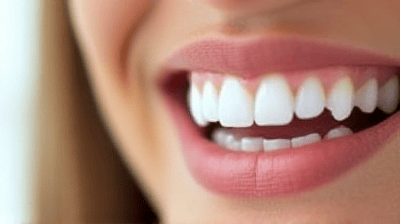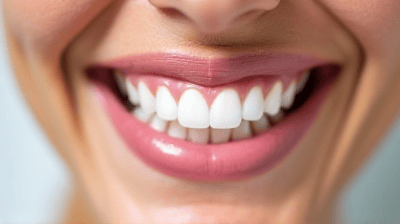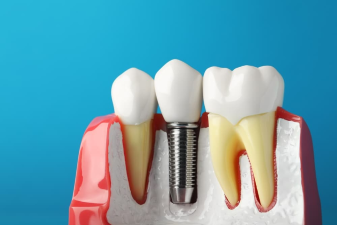As teenagers become more conscious of their appearance, many start exploring options to enhance their smile. Teeth whitening is one of the most sought-after cosmetic dental procedures among adolescents. With a variety of whitening options available, including professional treatments and at-home kits, it can be challenging for teens and their parents to determine the best path forward.

Understanding Teeth Whitening
Teeth whitening is a cosmetic dental procedure aimed at lightening the color of teeth and removing stains or discoloration. Various factors can affect the color of teeth, including lifestyle choices, dietary habits, oral hygiene, and even genetics. As teenagers typically consume staining beverages like soda and sports drinks as well as snacks high in sugar, it is common for them to seek whitening solutions to achieve a brighter smile.
Why Teenagers Opt for Whitening
- Self-Esteem Boost: A brighter smile can enhance self-confidence during a time when peer acceptance is crucial.
- Special Events: Adolescents may want whiter teeth for significant events such as prom, graduation, or other celebrations.
- Social Media Influence: With the pervasive nature of social media, teens often compare themselves to influencers and peers, emphasizing the importance of an attractive smile.
Types of Teeth Whitening Treatments
There are two primary categories of teeth whitening methods: professional treatments provided by dentists and at-home whitening kits. Understanding the differences between these options is essential for making an informed decision.
Professional Teeth Whitening
Professional teeth whitening involves treatments conducted by a licensed dentist. These procedures tend to offer more immediate and dramatic results. Here are some common professional whitening methods:
-
In-Office Whitening: This is the most common form of professional whitening. Dentists use a concentrated whitening gel containing hydrogen peroxide or carbamide peroxide and may employ a special light or laser to accelerate the whitening process. In-office treatments typically last between one to two hours and can lighten teeth by several shades in a single session.
-
Take-Home Kits: Many dentists provide customized whitening kits that include custom-fitted trays and professional-strength whitening gel. Patients apply the gel to the trays and wear them for a specified duration, usually overnight or for a few hours each day. These kits allow for gradual whitening over time and are supervised by the dentist to ensure safety and effectiveness.
At-Home Whitening Treatments
At-home whitening options are widely available and often more convenient. However, results can vary, and they typically take longer to achieve noticeable effects. Common at-home whitening methods include:
-
Whitening Toothpaste: These contain mild abrasives and chemical agents that help remove surface stains. While they can help maintain a brighter smile, they do not dramatically change the whiteness of teeth.
-
Whitening Strips: These adhesive strips are coated with a whitening gel and are applied directly to the teeth. They are generally easy to use and can deliver results over the course of several days. However, the concentration of whitening agents is typically lower than in professional treatments.
-
Whitening Kits: Many at-home kits include trays and whitening gel similar to the professional take-home versions, but they may not be custom-fitted. Results can take longer to appear, and the effectiveness greatly depends on the quality of the product.
-
Natural Remedies: Some individuals opt for DIY whitening solutions like baking soda, hydrogen peroxide, or activated charcoal. While some may see minor improvements, these methods can be less effective and may damage enamel if misused.

Comparing Professional and At-Home Whitening
Effectiveness
-
Professional Whitening: Generally, professional treatments provide more significant and immediate results. In-office procedures can lighten teeth by several shades in a single appointment. Dentists use stronger whitening agents and have the expertise to tailor treatments to individual needs.
-
At-Home Whitening: While at-home kits can be effective, results may vary depending on the product and individual factors. Treatment typically takes longer, with visible effects appearing after several days or weeks of consistent use. For mild staining, whitening strips or kits may suffice, but for deeper discoloration, professional intervention is often necessary.
Safety
-
Professional Whitening: Dental professionals assess the overall oral health of the patient before proceeding with any whitening treatment. They can identify issues like gum sensitivity or enamel erosion and modify the approach accordingly. Under the supervision of a dentist, the risk of adverse effects is significantly reduced.
-
At-Home Whitening: Over-the-counter products can be safe if used as directed, but there is a higher risk of misuse and improper application. Some at-home kits may contain lower-quality whitening agents, leading to inconsistent results. Moreover, without professional guidance, individuals may inadvertently apply products too frequently, potentially causing gum irritation or enamel damage.
Cost
-
Professional Whitening: The cost of in-office whitening typically ranges from two hundred to one thousand dollars, varying based on location, the dentist's expertise, and the specific treatment used. Customized take-home kits may cost between 100 to 500 dollars. While this may seem higher than at-home options, the results can be more impressive and longer-lasting.
-
At-Home Whitening: At-home treatments are generally more budget-friendly, with whitening strips and kits ranging from 20 to 100 dollars. However, repeated purchases may be necessary to achieve desired results. Ultimately, the cost-effectiveness of at-home options depends on the specific products used and the treatment duration.
Convenience
-
Professional Whitening: In-office treatments may require scheduling and can be time-consuming, typically lasting around one to two hours. However, the significant results achieved in one sitting may make it worth the time investment, especially before an important event.
-
At-Home Whitening: The convenience of at-home treatments is appealing to many teenagers. They can be incorporated into daily routines without the need for appointments. However, at-home kits require commitment and consistency to achieve results, which may not suit every teen’s lifestyle.
Suitability for Teenagers
When considering whitening treatments for teenagers, several factors must be taken into account, including age, dental health, and specific goals.
-
Age Considerations: Most dental professionals recommend waiting until the late teen years, around 16 to 18 years of age, before pursuing whitening treatments. This is because adolescent teeth are still developing, and introducing strong whitening agents too early could affect dental health.
-
Dental Health: Teenagers should have regular dental check-ups prior to undergoing whitening treatments. Issues such as cavities, gum disease, or enamel sensitivity should be addressed beforehand. A dental professional can assess whether whitening is appropriate and safe based on individual conditions.
-
Expectations: It is vital for teenagers to set realistic expectations regarding the outcomes of whitening treatments. While they may desire a Hollywood-perfect smile, their results will depend on their natural tooth color, the degree of staining, and the chosen treatment method.
Other Considerations for Teeth Whitening
Sensitivity
Teeth sensitivity is a common concern associated with teeth whitening. Adolescents may experience heightened sensitivity due to various factors, such as existing dental conditions or overuse of whitening products. It is essential to communicate any concerns with a dental professional, who can recommend suitable products or alternative treatments.
Maintenance of Results
Maintaining the results of teeth whitening requires diligence. Here are some tips for prolonging the effects of teeth whitening regardless of the method used:
-
Practice Good Oral Hygiene: Consistently brushing and flossing not only keeps teeth healthy but also helps maintain their brightness.
-
Limit Staining Foods and Drinks: Reducing the consumption of substances like coffee, tea, red wine, and berries can minimize staining. If consuming them is necessary, consider rinsing your mouth with water afterward.
-
Regular Dental Cleanings: Scheduling biannual dental cleanings can help remove surface stains and keep teeth looking bright.
-
Touch-Up Treatments: Some teens may benefit from occasional touch-up treatments or maintenance products, particularly if they have opted for at-home whitening kits.
Conclusion
When it comes to teeth whitening for teenagers, both professional and at-home treatments have their advantages and drawbacks. Professional whitening generally provides more immediate and significant results under the supervision of a dental professional, making it a suitable option for many adolescents seeking a brighter smile. However, for those looking for convenience or lower costs, at-home whitening kits can also offer effective results, provided they are used correctly.
Before deciding on a whitening treatment, teenagers and their parents should consider factors such as individual dental health, desired outcomes, budget, and sensitivity levels. Consulting with a dentist can help guide the decision-making process and ensure that chosen methods align with the teen's overall oral health needs.



